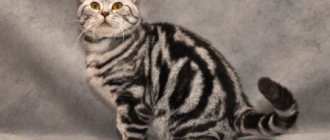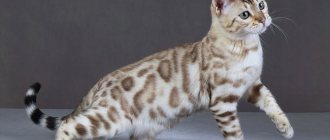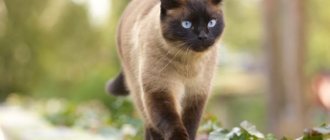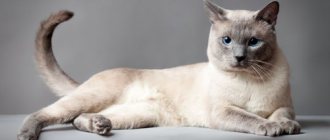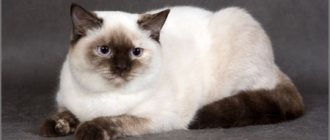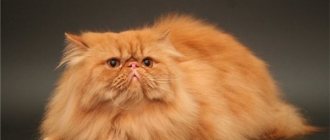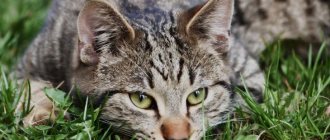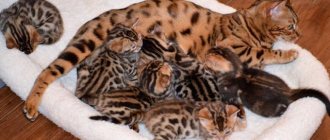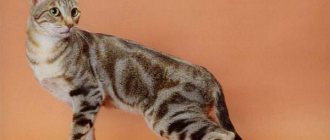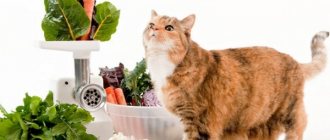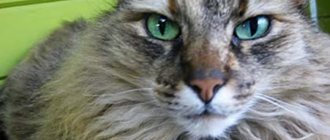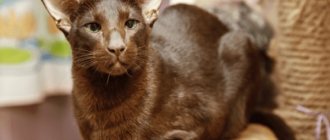The popularity of these leopard-like animals is growing day by day; real fans are not stopped by either the cost, the low distribution, or the lack of conditions for keeping exotic beauties.
These are leopard-colored cats, whoever saw their photos will never forget, the story is about the most popular breeds with this fashionable color. The first breed that comes to mind is the Bengal, which combines the genes of a domestic cat and a small leopard or Asian leopard cat. Selection work has been carried out since 1961 by the American breeder Jean Mill. To date, it has been recognized by world systems of felinology.
From the 4th generation, the Bengal is considered domestic. The first representatives wore the color in “gold” (black spots on a red background), later the colors were significantly diversified: marble (sparble or raincoat type of spots merged into a pattern), silver, snow (from 3 subtypes - mink, dinks and sepia), while Another experimental “charcoal” (both background and markings are the same color).
A cat with a coat of three colors is successful with buyers and breeders.
... and the spots should be located identically to the pattern of a real jaguar - in the form of rosettes. The coat, whatever its color, is the calling card of the breed, distinguished by short, glittery hairs without undercoat, tightly adjacent to the body and forming a “wild” pattern. The price for a domestic leopard with a pedigree is 85.5 thousand.
Rejected Bengals with a plush disposition, bred by Judy Sugden, have not yet received worldwide felinological recognition, but they have won hundreds of admirers for their appearance, which gave them the name “toyger”. The fact that stripes are not standard among Bengals has become a feature for the new breed. The character of mini-tigers is much kinder and more domestic than that of their progenitor. Advertisements with photos of Toyger kittens report that the price of these pets is from 60 to 200 thousand rubles, and can only be bought in official nurseries.
History of the breed
The domestic cat, like the leopard, a breed that began to develop in the mid-60s of the last century, was born thanks to the work of Jeanne Mill. Jeanne was involved in breeding domestic pets and was one of the first to document the successful crossing of a domestic cat and an Asian leopard cat. The official breeding program for Bengal cats started a little later - in the early 80s. The breeders set themselves the task of preserving the wild appearance of the cat, so the emphasis in breeding work was placed on breeding healthy offspring with a characteristic spotted coat color.
At the same time, the temperament of animals should be quite restrained to ensure the safety of owners, their family members and other pets. When breeding reached its peak, breeders drew up a breed standard that was adopted by the International Cat Association (TICA).
Another representative of the leopard color is the Ocicat.
Although the name comes from the wild ocelot, there are actually three types of domestic breeds involved - Siamese, Abyssinian and American Shorthair. The result was a friendly, gentle, quick-witted creature with a unique appearance. All hair (except the tail hair) has a pattern - a stripe, which, merging, creates spots. The letter “M” is emblazoned on the forehead, the eyes are outlined in black, the contrast between light and dark is striking. The cost of purchasing and delivering an Ocicat will exceed 100 thousand rubles.
A rare breed of leopard cat with wild blood running through its veins is the South American Geoffroy cat, named after the French zoologist who first noticed this animal. Until now, this breed has been forcibly “humanized”; it is kept by Americans and Europeans. Like all savages, it loves to swim, eats rodents and is nocturnal. The value of the stylish skin led to the long extermination of Geoffroy; now the hybrid animal is estimated at 7-10 thousand dollars.
Spotted pattern
The spotted coat, which makes these cats look like leopards, is the most common coat among Bengals. The spots are evenly distributed throughout the body - small, medium. The most valuable pattern is with large “rosettes”, dark spots on a light background. Rosettes are two-color spots that contrast with the main background.
The spotted pattern on the fur of the Bengal cat is represented by a number of varieties:
- Single-Spotted. Monochronic spots are like drops of paint on a contrasting background. This color makes the Bengal look like a cheetah, ocicata, and Egyptian Mau.
- Arrowhead Rosettes. “Rose arrows” can be either solid monochrome or multi-colored, gradually disappearing. They got their name because of their triangular shape, reminiscent of an arrowhead - its “point” is facing the back of the animal. Breed standards require that the spots be aligned exactly horizontally.
- Donut Rosettes. "Donut rosettes" (or ring rosettes) make the Bengal look like a yagur. Such spots are much darker than the background and look two-color: an almost black edge and a lighter middle.
- Paw-print Rosettes. Translated as “paw print rosette.” These are like shaded spots, circles, open on one side - this color is reminiscent of the fur of a leopard. The rosette is bordered by small spots that do not form a continuous circle.
- Clouded Rosettes. Smoky rosettes resemble puzzles, as if scattered across the wool at small intervals. This “mesh spotting” makes the Bengal look like either a clouded leopard or a snake.
- Chain Rosetting. These are the so-called “doughnut rosettes”, horizontally connected to each other, running parallel to the cat’s spine on both sides. The pattern makes the Bengal look like an ocelot.
- Cluster Rosettes. Cluster rosettes are small spots that are grouped into clusters around a specific center.
Examples of spotted patterns in Bengals:
Bush cat from the African continent - serval - waterfowl of a nocturnal predator
... which has been domesticated almost since the times of ancient Egypt. But this animal came to Europeans and Americans only in the 19th century. The breed has not yet received permission to participate in competitions; the kittens do not have an official pedigree. Care, living conditions and food are very unusual, and the cost exceeds half a million rubles.
The Abyssinian and the Serval gave birth to offspring called the Savannah, which is considered the largest breed in the world. The leopard color here is of “wild” origin, varieties are silver, gold, cinnamon, red, chocolate. Savannah is inquisitive, playful, loves water treatments, inquisitive and does not tolerate loneliness well. The price of a large leopard cat is 4-20 thousand dollars, when delivered to Russia it can reach up to 1.5 million rubles.
Serengeti is a predatory color combination, similar to the serval, but created without the participation of wild blood, honey eyes and large ears, and the character is just a gift to all cat fans, it is curiosity, lack of fear of strangers, playfulness, love for the attention and understanding of the owners. The cost of the graceful Serengeti, despite the increasing number of breeders, can be determined as 1-2 thousand dollars, and this is not yet even a breed that does not participate in exhibitions and competitions.
Those who like a leopard with tasseled ears like a lynx should take a closer look at the pixie-bob (short-tailed elf), created back in 1985. Unconfirmed data indicate the presence of a “wild” gene, but evidence and information about the origin of the breed are unknown. A bright appearance with several characteristic features at once does not prevent the pixie-bob from having the behavior and disposition of dogs. Loyalty, observation, calmness and friendliness towards everyone (including children, other animals, strangers) - these are the nice pets, in order for them to become your companions, get ready to fork out $600-1500. For breeding in a nursery you will need even more - 5000.
What does a Bengal cat look like?
Most often, cats of this breed are large in size. The body length is from half a meter to 80 cm and an additional tail is about 30 cm. The weight of males and females varies. The female weighs 3–5 kg, the male – 6–8 kg. The tail has the shape of a cone, the tip is rounded. The head of such cats is relatively small relative to the entire body and has a wedge-shaped shape. Representatives of this breed are very similar to wild cats , this is also due to their rather wide nose. The ears are not very large, they are wide at the base and rounded at the top.
Kittens have a variety of eye colors, including emerald, brown, soft olive and even yellow. The eye shape is almond or oval. Unlike representatives of other breeds, Bengal cats amaze with their intelligent look . Even if you look at photos of Bengal cats, it seems that their gaze is human.
The difference between Bengal domestic leopards and representatives of other breeds:
- Leopard color.
- The predator's habits are graceful and flexible.
- Love for water procedures.
Unlike all cat breeds, the leopard kitten surprises with its unique color. This is, one might say, a miniature leopard.
Bengal kitten and its color
If you study photos of several Bengal cats, it becomes clear that different animals have different hair.
- Spotted - dark spots of approximately the same size and shape are located throughout the coat.
- Marbled - there are no pronounced spots; dark patterns are located along the kitten’s body, which have different sizes and shapes.
- Rosette - this interesting color is expressed in light spots with intense dark edging.
The base coat color is most often brown (brown tabby) or silver (silver tabby). From this division there are 6 main types of color of the Bengal kitten .
- Silver tabby marbled
- Silver tabby spotted
- Silver rosette tabby
- Brown tabby marble
- Brown tabby spotted
- Brown tabby rosette
If you decide to adopt a small Bengal kitten, do not worry that the coat color and spots are faded and unclear. This feature is provided by wildlife for camouflage. A Bengal kitten develops this color, called phasing, from approximately 1 month to 4 months of age. As the baby grows into a teenager, the color will become more intense.
Bengal cat
The oldest bred breed in the world is the Egyptian Mau.
She continues the list. The main features, in addition to color, are emerald-colored eyes, their “outline” with a black outline and the scarab mark on the forehead. In addition to gold, there are silver, smoky, bronze and pewter colors. A slender and graceful pet with an independent and balanced disposition will suit those people who spend a lot of time at home and also like to have a heart-to-heart chat with cats.
A little phlegmatic, but never ceasing to be beloved pets, the Scots and the British also have the color of a “wild animal” and have all the features inherent only to domestic animals. These are calm and sedentary couch potatoes, sleepyheads and simply lazy people who prefer to sleep over all types of activity. Their American relative, the Kutshaar (American shorthair), is also included in this category. On Avito they offer to buy these animals for 4 thousand or more rubles, and an overseas comrade for 10-15 thousand rubles.
Presented publicly in 1982, the short-haired European cat in the “silver tabby” color has since then enjoyed popularity, and at the same time has not lost its hunting habits. Such a pet can be purchased for 7,000-10,000 rubles.
Maine Coon is also available in leopard print
This raccoon cat is the pride of American catteries, for decades being the world's largest cat breed (weight up to 16 kg, size up to 1.5 meters). The Maine Coon is an excellent hunter with a friendly and calm character. In the specified colors it can be bought from an advertisement for 15 thousand, but the pedigree is not indicated.
The independent Siberian cat (Siberian breed), known since the time of the development of the territory of the same name, often has a leopard color, is famous for its famous fluffy coat and character, suitable for keeping in almost any environment, preferably in the north. Cost – 5 thousand and above.
New, experimental breeds, not very common and therefore expensive are:
The Californian shining cat is not wild, on the contrary, it combines Manx, Siamese, Angora, Abyssinian, and British Shorthair. This is a symbol of the wild cats of Africa that are being destroyed by people. Created by Paul Casey, screenwriter. Friendliness, intelligence, and quick wit are combined with undemandingness and silence in these cats. Tabby color is available in 8 variations - gold, silver, red, blue, bronze, brown and black. The cost of the shining Californian cat is high ($1,500-$2,000); it is currently sold only in the United States; the exclusive product is not available to everyone.
Wild kazonzo from Africa
Or wild and domesticated a second time became the progenitors of the soukok or sokoke, also known as the Kenyan forest cat. Danish breeder Jenny Slator got Sokoke approved in 1992. Basically, all cats are leopard color, marbled is the most common. They are excellent hunters, independent and willful, but get along well with both humans and other pets. The rarity also determines the high cost - 80-100 thousand rubles, not including the cost of transportation from Europe.
The Ussuri cat appeared relatively recently through natural means from Siberian and Amur representatives. It was registered as an experimental breed in 1994, but even now Ussuri cats have not become widespread. The color is always tabby, from fawn to golden tones. The pet has the habits of a wild predator with an independent and independent disposition; pride prevents him from becoming a full member of his environment, so he prefers loneliness. It is difficult for him to endure the company of children; he remains loyal to only one owner. The price of a freedom-loving cat is from 50 thousand rubles.
Another leopard pet is the Australian smoke cat, Mist. Sydney breeder Trude Street, whose selection work included Burmese, Siamese and Abyssinian, as well as ordinary non-pedigreed cats, can be proud of its work. There are a lot of colors, but the most common is tabby. Mist has excellent health, combining dignity and grace. The Australian Smoky is not yet recognized throughout the world and is poorly distributed, but with its loyalty, agility and energy it is popular among cat fans. A PET class kitten costs $400.
Other types of breeds with leopard coloring
Which cat to give to your grandchildren: the best breeds for children
Striped and spotted colors in animals are determined by the presence of a special T gene. Depending on the type of breed, the main color may be darker or lighter than the spots.
Savannah domestic cat
Today, the most popular types of cat breeds with leopard coloring are the following:
- The Bengal is a hybrid breed that is the result of crossing a domestic cat with a leopard cat. Currently, representatives of this species are very popular and are in great demand;
- savannah. The name of the breed was registered in 2001. The individuals were obtained by crossing the Serval and the Abyssinian breed. Representatives of the breed are considered one of the most expensive and largest;
- Serengeti. The species was created in 1994 as a result of crossing the Bengal and the Oriental. Such cats are distinguished by the fact that they are able to make various sounds that are not characteristic of ordinary cats;
- Ussuri. The species was registered in 1994. Outwardly similar to a wild cat;
- chito. Brought out by crossing an Ocicat and a Bengal cat. Representatives of the breed are distinguished by an easy-going character and are strongly attached to people. The coat can be of 6 colors, it is very thick and velvety.
This is not the entire list of cats with leopard color. It would take a very long time to list them.
